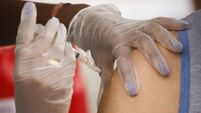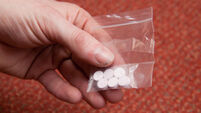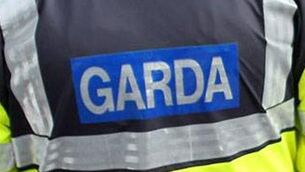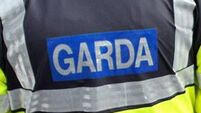Improved warning signs could have prevented road tragedy
Three young men might not have died in a horrific traffic collision if there had been better road warning signs, a Belfast inquest heard today.
Gary Black, 23, David Anderson 18, and Pierce Harvey, 18, were killed when the Ford Mondeo car they were travelling in overshot a junction, plunged over a steep embankment and crashed into a warehouse at Newton Abbey on the outskirts of north Belfast in January last year.
The families of the three dead and the coroner for Greater Belfast, John Leckey, expressed concern that traffic signs were ineffective in warning drivers they were coming towards a junction.
Mr Leckey said: “The families have understandable concerns about this particular junction and if things had been different regarding the warnings that there was a T-junction, the outcome may not have been a fatal one.”
A police sergeant and a forensic expert both gave evidence to the inquest, calling on the Department of Regional Development (DRD) to install warning signs at the side of the road where the embankment leads to a steep 4.3 metre (14ft) drop.
Theresa Anderson, whose son David was the front seat passenger in the car, was shocked that a year after the tragedy the department had not taken steps to improve signage at the junction.
“The anniversary of their deaths is on the 26th of this month and it is very upsetting that other people could have died during this time,” he said.
“No one involved with the road signing can give a straight answer.”
It was revealed that there have been a total of 10 accidents at the junction of the Hyde Park and Mallusk Road between January 1999 and September 2004. Three of these accidents involved vehicles overshooting the junction and ending up on the embankment but only one had proved fatal.
Roy Gordon, the DRD’s Road Service Traffic Management Engineer for the area, confirmed they were now considering erecting a black and white chevron barrier opposite the Hyde Park Road.
He said the designs would be ready within four weeks.
The post mortem showed that the driver Gary Black was twice over the legal alcohol limit at the time of the accident.
He and his two friends had been drinking in a Gaelic Athletic Club in the Ardoyne area of north Belfast and had driven to the Mallusk area in the early hours of January 26.
It is not known exactly what time they crashed but a security man discovered the vehicle at around 4.40am.
Forensic expert Damian Coll said the driver had tried to brake to avoid the embankment. Tyre marks on the grass verge indicated that he was travelling at around 50mph after he applied the brakes.
Mr Coll said the hazard warning lines on the road had been almost completely worn away but the red Stop sign near the junction was clearly visible.
“There were no signs at the grass verge which would have assisted the driver to know he was approaching a junction. This would have been particularly beneficial during the hours of darkness.”
The post mortem found that Mr Black from Alliance Avenue in north Belfast who died at the scene had sustained a fractured skull and bruising and lacerations to his brain.
Mr Anderson, also from Alliance Avenue, died at the scene of multiple injuries. He was found to be the only one not wearing a seat belt.
Mr Harvey, the rear seat passenger, from Velsheda park, Ardoyne in north Belfast, died six days later in hospital. He had been on a ventilator in the intensive care unit , having sustained serious brain injuries.
The coroner presenting his findings said: “This was an absolutely dreadful accident and the circumstances of it merit very careful consideration by the government department concerned and I am relieved to hear that sympathetic consideration is being given to the views of Mr Coll and the signs to improve safety at this junction.”
Mr Leckey called on the DRD to contact him and the relatives once the road improvements were put in place.













